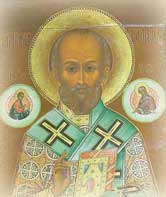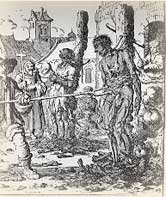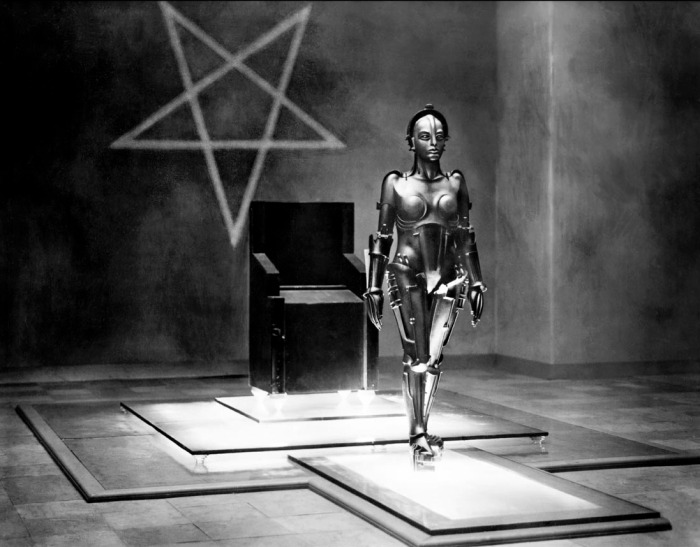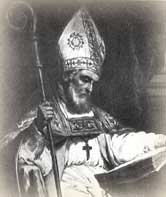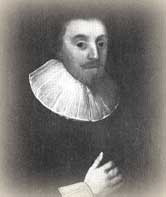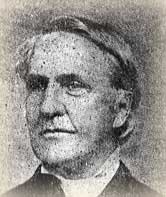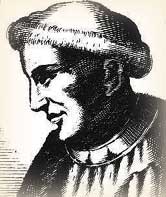Each year, as we approach the holiday season, our preparations for Christmas include revisiting the events surrounding the birth of Our Lord. Bethlehem, (1) the shepherds, and the angels are familiar to us all. But not much is generally known about the mysterious "Magi" who came to worship the infant Jesus. The following background may be helpful to stimulate conversations around the fireplace as our thoughts turn to this incredible event from which we measure our very calendar.
Traditions
Most of what we associate with the "Magi" is from early church traditions. Most have assumed there were three of them, since they brought three specific gifts (but the Biblical text doesn't number them). They are called "Magi" from the Latinized form of the Greek word magoi, transliterated from the Persian, for a select sect of priests. (Our word "magic" comes from the same root.)
As the years passed, the traditions became increasingly embellished. By the 3rd century they were viewed as kings. By the 6th century they had names: Bithisarea, Melichior, and Gathaspa. Some even associated them with Shem, Ham and Japheth--the three sons of Noah--and thus with Asia, Africa, and Europe. A 141h century Armenian tradition identifies them as Balthasar, King of Arabia; Melchior, King of Persia; and Gasper, King of India.
(Relics attributed to them emerged in the 4th century and were transferred from Constantinople to Milan in the 5th century, and then to Cologne in 1162 where they remain enshrined.)
These are interesting traditions, but what do we really know about them?
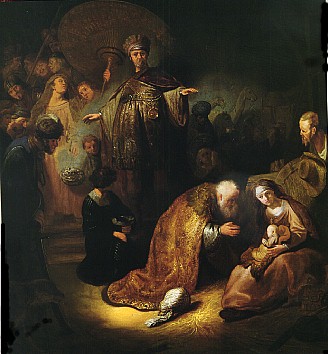
The Priesthood of the Medes
.The ancient Magi were a hereditary priesthood of the Medes (known today as the Kurds) credited with profound and extraordinary religious knowledge. After some Magi, who had been attached to the Median court, proved to be expert in the interpretation of dreams, Darius the Great established them over the state religion of Persia. (2) (Contrary to popular belief, the Magi were not originally followers of Zoroaster. (3) That all came later.)
It was in this dual capacity, whereby civil and political counsel was invested with religious authority, that the Magi became the supreme priestly caste of the Persian empire and continued to be prominent during the subsequent Seleucid, Parthian, and Sasanian periods. (4)
The Role of Daniel
One of the titles given to Daniel was Rab-mag, the Chief of the Magi. (5) His unusual career included being a principal administrator in two world empires--the Babylonian and the subsequent Persian Empire. When Darius appointed him, a Jew, over the previously hereditary Median priesthood, the resulting repercussions led to the plots involving the ordeal of the lion's den. (6)
Daniel apparently entrusted a Messianic vision (to be announced in due time by a "star") to a secret sect of the Magi for its eventual fulfillment. But first let's review some historical background.
Political Background
Since the days of Daniel, the fortunes of both the Persian and the Jewish nation had been closely intertwined. Both nations had, in their turn, fallen under Seleucid domination in the wake of Alexander's conquests. Subsequently, both had regained their independence: the Jews under Maccabean leadership, and the Persians as the dominating ruling group within the Parthian Empire.
It was at this time that the Magi, in their dual priestly and governmental office, composed the upper house of the Council of the Megistanes (from which we get the term "magistrates"), whose duties included the absolute choice and election of the king of the realm.
It was, therefore, a group of Persian--Parthian "king makers" who entered Jerusalem in the latter days of the reign of Herod. Herod's reaction was understandably one of fear when one considers the background of Roman-Parthian rivalry that prevailed during his lifetime.
Rome on the Rise
Pompey, the first Roman conqueror of Jerusalem in 63 B.C., had attacked the Armenian outpost of Parthia. In 55 B.C. Crassus led Roman legions in sacking Jerusalem and in a subsequent attack on Parthia proper. The Romans were decisively defeated at the battle of Carrhae with the loss of 30,000 troops, including their commander. The Parthians counterattacked with a token invasion of Armenia, Syria, and Palestine.
Nominal Roman rule was reestablished under Antipater, the father of Herod, who, in his turn, retreated before another Parthian invasion in 40 B.C.
Mark Antony reestablished Roman sovereignty in 37 B.C. and, like Crassus before him, Also embarked on a similarly ill-fated Parthian expedition. His disastrous retreat was followed by another wave of invading Parthians, which swept all Roman opposition completely out of Palestine (including Herod himself, who fled to Alexandria and then to Rome).
With Parthian collaboration, Jewish sovereignty was restored, and Jerusalem was fortified with a Jewish garrison.
Herod, by this time, had secured from Augustus Caesar the title of "King of the Jews." However, it was not for three years, including a five months' siege by Roman troops, that Herod was able to occupy his own capital city! Herod had thus gained the throne of a rebellious buffer state which was situated between two mighty contending empires. At any time his own subjects might conspire in bringing the Parthians to their aid. At the time of the birth of Christ, Herod may have been close to his final illness. Augustus was also aged, and Rome, since the retirement of Tiberius, was without an experienced military commander. Pro-Parthian Armenia was fomenting revolt against Rome (which was successfully accomplished within two years.)
The Tensions in Parthia
The time was ripe for another Parthian invasion of the buffer provinces, except for the fact that Parthia itself was racked by internal dissension. Phraates IV, the unpopular and aging king, had once been deposed and it was not improbable that the Persian Magi were already involved in the political maneuvering requisite to choosing his successor. It was conceivable that the Magi might be taking advantage of the king's lack of Popularity to further their own interests with the establishment of a new dynasty, which could have been implemented if a sufficiently strong contender could be found.
At this time it was entirely conceivable that the Messianic prophecies of the Old Testament, culminating in the writings of Daniel, one of their own Magians, was of profound motivating significance. The promise of a divinely imposed world dominion at the hands of a Jewish monarch might be more than acceptable to them. (Their own Persian and Medo-Persian history was studded with Jewish nobles, ministers, and counselors; and in the great Achaemenid days, some of the kings themselves were of Jewish blood.)
The Entourage to Jerusalem
In Jerusalem, the sudden appearance of the Magi, probably traveling in force with all imaginable oriental pomp and accompanied by an adequate cavalry escort to insure their safe penetration of Roman territory, certainly alarmed Herod and the populace of Jerusalem.
It would seem as if these Magi were attempting to perpetrate a border incident which could bring swift reprisal from Parthian armies. Their request of Herod regarding the one who "has been born King of the Jews" (7) was a calculated insult to him, a non--Jew (8) who had contrived and bribed his way into that office.
Consulting his scribes, Herod discovered from the prophecies in the Tanach (the Old Testament) that the Promised One, the Messiah, would be born in Bethlehem. (9) Hiding his concern and expressing sincere interest, Herod requested them to keep him informed.
After finding the babe and presenting their prophetic gifts, the Magi "being warned in a dream" (a form of communication most acceptable to them) departed to their own country, ignoring Herod's request. (Within two years Phraataces, the parricide son of Phraates IV, was duly installed by the Magi as the new ruler of Parthia.)
Daniel's Messianic Role
Living six centuries before the birth of Christ, Daniel certainly received an incredible number of Messianic prophecies. In addition to several overviews of all of Gentile world history, (10) the Angel Gabriel told him the precise day that Jesus would present Himself as King to Jerusalem."
It is interesting that Daniel's founding of a secret sect of the Magi also had a role in having these prominent Gentiles present gifts at the birth of the Jewish Messiah.
The Christmas Gifts
The gifts of gold, frankincense, and myrrh were also prophetic, speaking of our Lord's offices of king, priest, and savior. Gold speaks of His kingship; frankincense was a spice used in the priestly duties; and myrrh was an embalming ointment anticipating His death.
In the Millennium, He will also receive the gifts of gold and frankincense;" but no myrrh: His death was once and for all.
What gifts are YOU going to give Him this year? Discuss it with Him.
For a review of other back ground items, see The Christmas Story: What Really Happened, on page 22. Also, for a complete study of one of the most captivating and astonishing books of the Bible, see our Expositional Commentary on the Book of Daniel, on special this month (see page 41).
Notes:
1. For background on Bethlehem, study the Book of Ruth, our briefing package, The Romance of Redemption, or Chuck's Expositional Commentary on Ruth and Esther.
2. Oneiromancy, not astrology, is their key skill mentioned by Herodotus, 1.107,120;VII.19.
3, Encyclopedia Britannica, 7:691.
4. Zondervan Pictorial Encyclopedia of the Bible, 4:31-34.
5. Daniel 4:9; 5: 11.
6. Daniel Chapter 6.
7. Matthew 2:2.
8. Herod was Idumean (an Edomite), a traditional enemy of Israel.
9. Micah 5:2. (Revealed by Holy Scripture, not astrology.)
10. Daniel 2 and 7. See also, An Empire Reborn? listed on page 23.
11. Daniel 9:24-26. See also, Daniel's 70 Weeks listed on page 23.
12. Isaiah 60:6.
Read more on this topic at - http://www.ldolphin.org/magi.html


